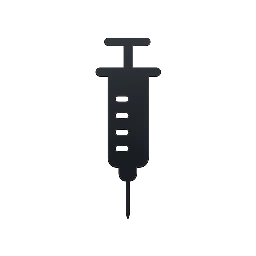Your cart is currently empty!
Injectable steroids generally fall into two categories, each with a different scientific basis: corticosteroids used for medical treatment of inflammation, and anabolic-androgenic steroids (AAS), which are synthetic variations of testosterone, often misused for performance enhancement and muscle building
Sometimes, the simplest moments hold the deepest wisdom. Let your thoughts settle, and clarity will find you.
Corticosteroids
Corticosteroids, such as cortisone or hydrocortisone, mimic the effects of cortisol, a hormone naturally produced by the adrenal glands.
Administration: The direct injection targets the problem area, allowing for high concentrations of the medication while minimizing systemic side effects
Mechanism of Action: When injected into a specific area (like a joint or around a tendon), they reduce inflammation and suppress the immune response. They achieve this by:
Inhibiting inflammatory molecules: Corticosteroids block the production of substances like prostaglandins and cytokines that promote swelling and pain.
Suppressing immune activity: They reduce the activity of white blood cells involved in the inflammatory process.
Gene expression: They bind to specific receptors within cells, sending signals to decrease the production of pro-inflammatory proteins and activate anti-inflammatory pathways.
Purpose: The primary goal is pain relief, which helps facilitate physical therapy and rehabilitation, not healing the underlying injury directly.


Anabolic-Androgenic Steroids (AAS)
AAS are synthetic versions of testosterone designed to maximize muscle growth (anabolic effects) and minimize masculinizing effects (androgenic effects), though some androgenicity remains.
- Mechanism of Action:
- Receptor binding: AAS travel through the bloodstream and bind to androgen receptors (ARs) inside muscle cells.
- Protein synthesis: This binding activates a process within the cell’s nucleus that stimulates gene expression and increases protein synthesis, leading to muscle cell growth (hypertrophy) and the formation of new muscle fibers.
- Anti-catabolic effect: They also inhibit the action of glucocorticoids (stress hormones), which are responsible for muscle breakdown (catabolism), allowing for faster recovery from intense training.
- Nitrogen retention: AAS promote nitrogen retention in muscles, a key component for building muscle size and strength.
- Administration: Injectable AAS formulations often involve dissolving the steroid in oil, forming a depot in the muscle tissue from which the compound gradually diffuses into the bloodstream over time. This esterification process makes the drug more lipophilic (fat-soluble) and retards its release, prolonging its effects.
- Purpose (non-medical use): Users, often bodybuilders and athletes, use AAS to increase lean muscle mass, improve strength, and speed up recovery times.
- Medical Use: Medically, AAS are prescribed for conditions like delayed puberty in males, loss of muscle from diseases like HIV or cancer, and certain hormone deficiencies.
Key Distinction
The main difference lies in their chemical structure and primary function: corticosteroids reduce inflammation, while anabolic steroids build muscle mass


Leave a Reply